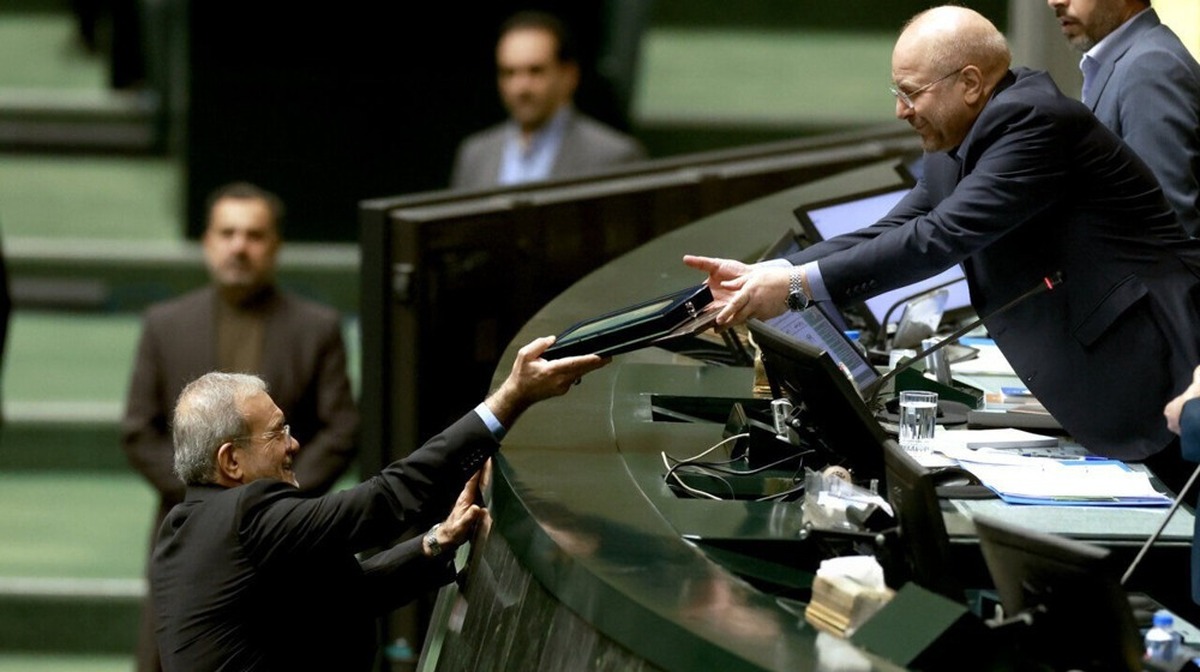
82% of Revenues, 125% of Expenses Realized in Fiscal 2020-21 Budget
EghtesadOnline: New data released by the Supreme Audit Court of Iran show the government supplied 82.5% of public resources in the last fiscal year’s budget (2020-21), as expenditure hit over 125% of the target.
Up to 127.4% of the government’s projected revenues in the 2020-21 Budget Law, i.e., 30,470 trillion rials ($112.85 billion) and 125.9% of projected expenditures, i.e., 30,462 trillion rials ($112.82 billion), were materialized last year.
Yet, considering that over 1,136 trillion rials ($4.2 billion) or 19% of the government’s public revenues were gained through Islamic bonds issued with the approval of the Supreme Council of Economic Coordination, chaired by the heads of three branches of government, the actual realization rate of public resources was 82.5%, IRNA reported.
Revenues outweighed expenditures, thanks to yearend treasury reserves worth 7,273 billion rials ($26.93 million).
The payment of 2,167 trillion rials ($8.02 billion) from the government’s public resources was the main reason behind the increase in exclusive expenditures to the exclusive revenues.
The increase in the government’s public expenditures compared to the approved resources was due to the receipt of 125,390 billion rials ($464.4 million) of revenues; the projected figure for the increase in public expenditures in the last year’s Budget Law was 1 million rials ($3.7).
Mehrdad Bazrpash, the director of Supreme Audit Court of Iran, the supervisory arm of Iranian Parliament, read out the 2020-21 annual monitoring report on Tuesday.
Every year, the Supreme Audit Court of Iran publishes a monitoring report on the government’s performance. The report provides information on financial flows and the implementation of government programs against the goals and targets set in the budget law.
For the 2020-21 annual monitoring report, a total of 3,700 state agencies were audited, IRNA reported.
Over $17b in Budget Deficit Expected
The budget deficit is on course to reach 4,640 trillion rials ($17.1 billion) in the fiscal 2021-22. The government is also facing an unfunded deficit of roughly 30% or 3,830 trillion rials ($14.1 billion), Majlis Islamic Studies Center has warned.
Citing the Supreme Audit Court of Iran, the center earlier announced that 27% of projected revenues compared with 44% of projected expenditure as per the budget law of the current fiscal year were materialized in the first two months of the year (March 21-May 21). It noted that if the current situation were to persist, i.e., projected revenues fail to materialize, there would be a higher budget deficit by the end of the year (March 20, 2022).
Close to 85% of tax revenues envisioned in the budget law were realized by May 21, indicating a 64% increase compared with the corresponding period of last year.
The center noted that the Cabinet failed to approve the bylaw on taxing luxury cars, expensive and vacant residential properties, so the government’s income from these sources remained zero just like last year.
With regard to unsustainable sources of public revenue, the sales of immovable assets accounted for 3% or 450 trillion rials ($1.6 billion) and the transfer of shares of public companies amounted to 20% or 2,560 trillion rials ($9.4 billion) of the budget revenues.
The rising aversion of investors to buy Islamic bonds offered by the Central Bank of Iran over nine rounds of auctions and the capital market woes cast serious doubt on whether the predicted revenues from the sale of capital and financial assets will be realized, according to the center.
It said political and economic issues associated with budgeting, the increase in sales of capital asset instead of improving sources of revenues and lack of fiscal discipline as well as decline in the real value of budget are among main causes of a budget deficit. Add to these, the challenges created by deficit in trade and capital account.
Strategies proposed by the center include overhauling the budget structure, improving the share of tax revenues and curtailing money creation and speculative practices by banks, particularly privately-held banks.
The center calls for close cooperation between government and parliament in putting together a bill on reforming the structure of the budget. It proposed measures such as prioritizing sources of revenue (instead of selling capital assets and borrowing) and economizing on expenses.
Given problems related with the sale of Islamic and treasury bonds, and the rise in money supply, Majlis Islamic Studies Center recommends that the government tap into the capacities of the central bank to address the budget deficit and streamline money creation by the banking system by increasing the bank reserves to at least 25% and in return increase the government’s petty cash from CBI. By employing this policy, the government will benefit from money creation to act in the public interest and prevent the undesirable involvement of banks in money creation.
“The policy taken in recent years regarding the financing of budget through the sale of bonds has been a costly one; it led to the replacement of public consumption expenditures with private consumption expenditures,” it said.
Majlis Islamic Studies Center is a scholarly research institution affiliated to the Iranian Parliament. The center is in close scientific cooperation with the Qom Theological School. The idea of establishing the Majlis Islamic Research Center of Majlis was proposed by Ali Larijani, the former speaker of Majlis, and after its approval by the Majlis directorate, it was established in October 2010 in Qom and began to work formally at the beginning of 2011.
The research activity of the center is based on Islamic studies along with the idea of taking advantage of different experts and scholars of law, religion, Islamic laws and Islamic jurisprudence with the purpose of providing the Islamic Republic of Iran with a cognitive patronage.



